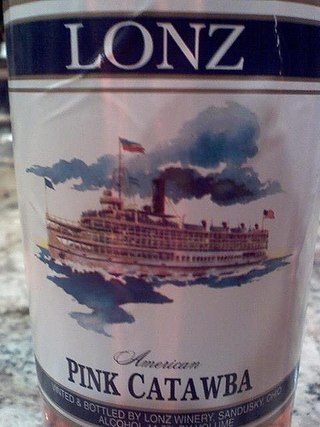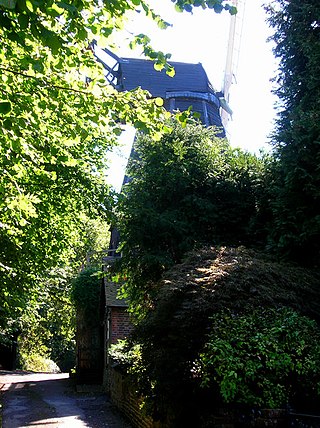Awards
The 2009 Medium Dry White was listed as one of the top 10 wines by The Daily Telegraph in 2010. [4] At the London International Wine Fair 2010, the vineyard won 2008 White Welsh Regional Wine. The vineyard also won a silver medal at the Decanter World Wine Awards, and a bronze medal in the International Wine and Spirit Competition. [5]
In the English and Welsh Wine of the Year competition 2010, Ancre Hill has won the following awards: Silver – Welsh Regional Wine Dry White 2009, Bronze – Welsh Regional Wine medium dry white 2009, Highly recommended – Welsh Regional Wine rosé 2009. [5] The vineyard also won Wales the True Taste Awards Gold Award in 2010-11 for their Medium Dry White, and a Bronze award for their Rosé [6]
The first vintage of the Sparkling white 2008 was voted the best Sparkling wine in the world in 2012 at the Bollicine del Mondo, held by Euposia magazine in Verona, Italy. Beating over 20 Champagnes in a blind tasting. [7]

Chardonnay is a green-skinned grape variety used in the production of white wine. The variety originated in the Burgundy wine region of eastern France, but is now grown wherever wine is produced, from England to New Zealand. For new and developing wine regions, growing Chardonnay is seen as a 'rite of passage' and an easy entry into the international wine market.

Grüner VeltlinerGerman: [ˈɡʁyːnɐ fɛltˈliːnɐ](listen)) is a white wine grape variety grown primarily in Austria, Hungary, Slovakia, and the Czech Republic. The leaves of the grape vine are five-lobed with bunches that are long but compact, and deep green grapes that ripen in mid-late October in the Northern Hemisphere.

White wine is a wine that is fermented without skin contact. The colour can be straw-yellow, yellow-green, or yellow-gold. It is produced by the alcoholic fermentation of the non-coloured pulp of grapes, which may have a skin of any colour. White wine has existed for at least 4,000 years.

The German wine classification system puts a strong emphasis on standardization and factual completeness, and was first implemented by the German Wine Law of 1971. Nearly all of Germany's vineyards are delineated and registered as one of approximately 2,600 Einzellagen, and the produce from any vineyard can be used to make German wine at any quality level, as long as the must weight of the grapes reaches the designated minimum level. As the current German system does not classify vineyards by quality, the measure of wine ’quality’ is the ripeness of the grapes alone.

Prosecco is an Italian DOC or DOCG white wine produced in a large area spanning nine provinces in the Veneto and Friuli Venezia Giulia regions, and named after the village of Prosecco which is in the province of Trieste, Italy. It is made from the Prosecco grape but denomination rules allow up to 15% of the wine to be other permitted varieties. Prosecco is almost always made in sparkling or semi-sparkling style, but a still wine is also permitted. Within the larger designation are two small DOCG areas, Conegliano Valdobbiadene Prosecco in the hills between the towns of Conegliano and Valdobbiadene, and Asolo Prosecco around the nearby town of Asolo. Prosecco Superiore is always spumante and comes only from these DOCG areas.
Clairette de Die AOC is a natural sparkling white wine from the Rhône Valley region in France. It is made from the Muscat Blanc à Petits Grains and Clairette grape varieties. It is characterized by its peach and apricot flavours and rose and honeysuckle aromas, and is usually drunk young at a maximum of two years, and served chilled at a temperature of 6°C to 8°C.

Catawba is a red American grape variety used for wine as well as juice, jams and jellies. The grape can have a pronounced musky or "foxy" flavor. Grown predominantly on the East Coast of the United States, this purplish-red grape is a likely cross of the native American Vitis labrusca and the Vitis vinifera cultivar Semillon. Its exact origins are unclear but it seems to have originated somewhere on the East coast from the Carolinas to Maryland.

New Zealand wine is produced in several of its distinct winegrowing regions. As an island country in the South Pacific Ocean, New Zealand has a largely maritime climate, although its elongated geography produces considerable regional variation from north to south. Like many other New World wines, New Zealand wine is usually produced and labelled as single varietal wines, or if blended, winemakers list the varietal components on the label. New Zealand is best known for its Marlborough Sauvignon Blanc, and more recently its dense, concentrated Pinot Noir from Marlborough, Martinborough and Central Otago.
South African wine has a history dating back to 1659 with the first bottle being produced in Cape Town by its founder and gouverner Jan van Riebeeck. Access to international markets led to new investment in the South African wine market. Production is concentrated around Cape Town and almost exclusively located within the Western Cape province, with major vineyard and production centres at Constantia, Paarl, Stellenbosch and Worcester.
The glossary of wine terms lists the definitions of many general terms used within the wine industry. For terms specific to viticulture, winemaking, grape varieties, and wine tasting, see the topic specific list in the "See also" section below.

West Chiltington is a village and civil parish in the Horsham district of West Sussex, England. It lies on the Storrington to Broadford Bridge road, 2.6 miles (4.2 km) north of Storrington.

The United Kingdom is a major consumer of wine, although a minor grower and producer. Wine production in the UK has historically been perceived as less than ideal due to the cold climate, but warmer summers and grapes adapted to these conditions have played a role in increasing investment and sale of wines. Most is English sparkling wine, from vineyards across Southern England and sparkling wine from Wales where the climate is warmer than that of northern areas. Vineyards are becoming more commonplace in counties such as Essex, Sussex and Kent, where more varieties of wine can be produced due to the drier and warmer climate.
Georgia is the oldest wine producing region in the world. The fertile valleys and protective slopes of the South Caucasus were home to grapevine cultivation and neolithic wine production for at least 8000 years. Due to millennia of winemaking and the prominent economic role it retains in Georgia to the present day, wine and viticulture are entwined with Georgia's national identity.

Catalan wines are those that are produced in the wine regions of Catalonia. Occasionally, the appellation is applied to some French wine made in the Catalan region of Roussillon and neighboring areas, also known as Northern Catalonia or the Pays catalans. The city of Barcelona is the capital of Catalonia and despite not being in a wine region, it is the focal point of the Catalan wine industry: a primary consumer market, its port provides export functions and a source of financial resources and investment. The Penedès is the largest wine-making region in Catalonia.
Wickham Vineyards are a vineyard and wine maker in England, located in Wickham, Hampshire. Established in 1984, the vineyard occupies 18 acres (73,000 m2) of a 40-acre (160,000 m2) estate. One of the white wines, named "Fumé", that the vineyard produces is served as the United Kingdom House of Commons house wine.

The Hunter Valley is one of Australia's wine regions. Located in the state of New South Wales and first cultivated in the early 19th century, it was one of the first Australian wine regions. As well as Hunter Valley Sémillon, the region produces wine from a variety of grapes including Shiraz, Chardonnay, Cabernet Sauvignon and Verdelho.

Sokol Blosser Winery is a vineyard, tasting room and winery facility located northeast of Dayton, Oregon in the Red Hills of Dundee in Yamhill County. It was founded by Bill Blosser and Susan Sokol Blosser in 1971 in what is now known as the Dundee Hills AVA. Sokol Blosser Winery is family owned and operated by second-generation co-presidents, siblings Alex and Alison Sokol Blosser, and is the 6th largest wine producer in Oregon. Sokol Blosser is considered to be “synonymous with sustainability,” and produces Pinot Noir, Pinot Gris, Chardonnay, proprietary blends Evolution White and Evolution Red, a range of other Evolution wines, and small quantities of single block Pinot Noirs, Rosé of Pinot Noir, White Riesling dessert wine, and sparkling wine.
Squerryes Estate is a vineyard, estate, and location of Squerryes Court, a grade I listed building in Kent, England. It is a producer of English sparkling wine.

The cuisine of Monmouthshire is historically associated with Lady Augusta Hall, who was also known as Lady Llanover. Lady Llanover published one of the first Welsh cookery books called First Principles of Good Cookery. The book uses a fictional Welsh hermit to give culinary advice to a visiting guest who is travelling though Wales.

The Marlborough wine region is by far New Zealand's largest, accounting for three quarters of the country's wine production, 70% of its vineyard area and 85% of its wine exports. A Geographical Indication in the north-east of the South Island, it covers the entire Marlborough District and the Kaikōura District of the Canterbury Region, but in practice the vineyards are concentrated around the Blenheim and Seddon townships. Internationally, Marlborough Sauvignon Blanc is recognised as world class; wine writers such as Oz Clarke and George Taber have described it as the best in the world.
















